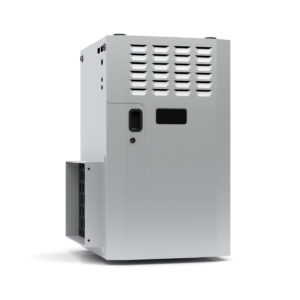
Heating and air conditioning systems have improved their energy efficiency vastly over the past 20 years. Today, the US Department of Energy’s ENERGY STAR program certifies the most efficient of these systems, which sometimes perform at 40% greater efficiency than older models.
The high-efficiency furnace is one of the big success stories in energy-friendly comfort. For many years, the standard efficiency of most furnaces was between 70 to 80% AFUE, meaning that 70 to 80% of the furnaces’ fuel source was converted to heat, the rest lost to exhaust. Today, there are high-efficiency furnaces that score higher than 95% AFUE.
How is this possible? There are a number of different technologies involved, and not all high-efficiency furnaces use the same ones. But here are the major sources of the superior energy performance from these furnaces:
Sealed combustion
This means that the combustion chamber of the furnace is open to the air around the furnace, i.e. atmospheric combustion. If you can look into your furnace and see the flames from the burners, it’s an atmospheric combustion furnace. Sealed combustion furnaces are closed to the air around the furnace and the house, and instead draw the air needed for combustion from outside through a PVC pipe. Sealed combustion loses less heat this way. (It’s also safer and helps prevent the air in the home from becoming too dry.)
Multi-speed blower fan
The blower fans of most furnaces are either on or off; they run at full power or none at all. Multi-speed blower fans have a special inverter motor on them (also found in high-efficiency air conditioners) that allow the fan to modulate how hard it works so it doesn’t need to work at capacity all the time. In fact, 60% of the time the blower fan is on, it will run at lower levels. The furnace controls this automatically based on the comfort needs of the house, so you don’t have to worry about controlling this—it’s already taken care of.
Second heat exchanger (condensing furnace)
This is the most talked-about technology in high-efficiency gas furnaces. You’ll see high-efficiency furnaces advertised as condensing furnaces because they use a second heat exchanger to condense the exhaust gases from the first to draw out more heat.
If you aren’t familiar with the heat exchanger, it’s the metal container where the hot combustion gas from the blowers gathers and then transfers to the air. The remaining cool exhaust gas is usually vented out of the furnace, which is where the furnace loses energy. But in a condensing furnace, this vapor goes to the second exchanger, where more heat is released through condensing it, cutting down the waste to almost nothing.
High-efficiency furnaces are more expensive than mid-efficiency models, but the savings over time may be worth it for your home. These furnaces run quieter as well, a benefit of the multi-speed fans. If you’re interested in learning more about a high-efficiency furnace for your heating installation in Stockton, CA, we’re the experts to call.
Greenhart is here to help you to “Live Green, Save Green!” Call us today to find out more about your options for energy-efficient heating in your home.

